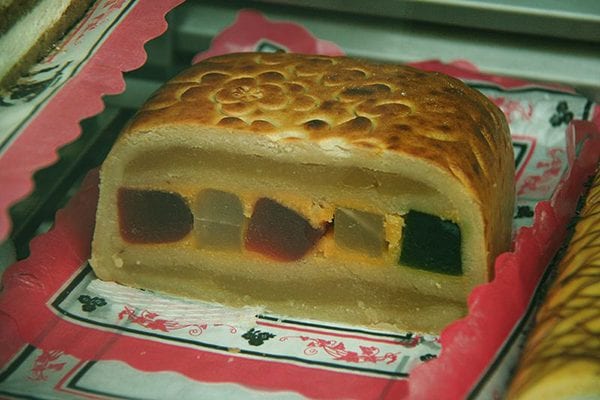Pan de Cádiz: a recipe for your seasonal preparations
Pan de Cádiz: a recipe for your seasonal preparations
Pan de Cádiz: a recipe for your seasonal preparations
-
Hannah
-
Hannah

Are you thinking about Christmas yet? Are you getting in the mood for feasting and merriment?
No doubt if you’ve been to a supermarket recently you’ve noticed a proliferation of Christmas fare on offer, from mince pies to gingerbread houses, stollen to macaroons. But have you spotted the traditional confectionary from Cádiz, Andalucía, setting for my new novel Legacy? If you don’t live in Spain, you most likely haven’t come across this delicious treat in your local shops – which is why today I’m sharing a recipe so that you can try it for yourself at home.

[Picture credit: Tamorlan]
First, a little background on Pan de Cádiz. The name translates to ‘bread of Cádiz’, but in fact it is not a bread, it simply looks a little like a loaf. It is also known as Turrón de Cádiz (Cadiz nougat) or Mazapán de Cádiz (Cádiz marzipan), which more aptly convey the content of the sweet.
Various varieties exist, but the core recipe for Pan de Cádiz always includes marzipan made with ground almonds, sugar, egg yolk and candied fruit, and it often includes sweet potatoes (and sometimes crystallised pumpkin). The Moors, who once lived in Cádiz, had much to do with the uptake of turrón, a nougat made from almonds, honey, egg yolks and sugar, and back in the nineteenth century the people of Cádiz would eat marzipan rolls with fruit. But it was a pastry chef named Antonio Valls Garrido put the two together and pioneered the Pan de Cádiz in his pastry shop, the Pastelería Viena, on the corner of San Miguel and Novena streets in the city.
If you’ve never tasted Pan de Cádiz, you’ve missed a treat: it’s sweet and flavourful, with a lovely moist and creamy texture, and the candied fruit within makes it fun and colourful. The people of Cadiz – and, indeed, in surrounding territories – eat Pan de Cádiz at Christmas, when it is handmade at home or bought from bakeries.
Traditionally, the process for Pan de Cádiz is as follows: Make a syrup with water and sugar – heat, and then cool. Add to well-beaten egg yolks and stir until thickened. Mix in ground almonds, sugar and cinnamon. Knead the ‘dough’ well, and form into the preferred shape (often a loaf), scattering into the layers the candied fruits. Brush with egg yolk and bake until golden. Then leave in a cool, dark place for several days to mature.
I follow a much simpler recipe when I make Pan de Cádiz, which incorporates sweet potato. You can use this recipe as a base and experiment with different additions, like your choice of candied fruit (I especially like to add the citrus fruits lemon, lime and orange).
Ingredients
500 grams almond flour
500 grams caster sugar
200 grams candied sweet potato (yams)
3 large eggs
- Preheat oven to 180 degrees C (350 degrees F).
- Mix the flour, sugar and two egg whites. Knead.
- Mix in the sweet potato and two egg yolks to one-third of the marzipan.
- Halve the remaining marzipan and roll out into two rectangles.
- Spread the sweet potato mixture onto one marzipan rectangle, and then place the other marzipan slice on top.
- Shape as desired (I favour the traditional loaf shape).
- Brush with the remaining egg yolk.
- Bake for 20 to 25 minutes until the loaf is a dark golden brown.
- Allow to cool, and then slice.
I serve Pan de Cádiz for guests over the seasonal period as part of a platter of sweet treats from around the world, with either tea or a sherry – which of course originates from Jerez de la Frontera in Andalucía, and so is the perfect accompaniment.
If, like me, you enjoy exploring different cuisines in your own kitchen, and the Mediterranean flavours of Spanish cuisine appeal, I can recommend this new cookbook by British food and travel writer Paul Richardson, which offers more than 100 easy-to-follow and delicious recipes that deliver authentic Spanish cuisine to home cooks everywhere:

First on my list to try? The authentic Spanish Hot Chocolate – perfect for the colder, darker nights.
It looks wonderful. My wife is bed ridden and I don’t cook unless it is microwaveable so I just have to drool. Maybe there is a place that Pan de Cádiz is available.
I did not realize until recently that Marzipan was Spanish. I should have known as in a supermarket in one of the El Corte Inglés department stores had more Marzipan than I have ever seen before or since.
Marzipan is a taste I very much associate with Christmas-time. I love the little fruits they make from it in Spain; they’re such colourful gifts.
I’m not sure whether your local supermarket would stock Pan de Cadiz. Perhaps someday if they have a Spanish-themed week.
Thank you, as always, for taking the time to read and comment.
I found a place that stocks Pan de Cadiz a little more than an hour away. They will ship it cheaper than I could drive up to purchase it. One place I could look locally is the Navy Commissary. They carry hard to get candies and confections around Christmas.